Share
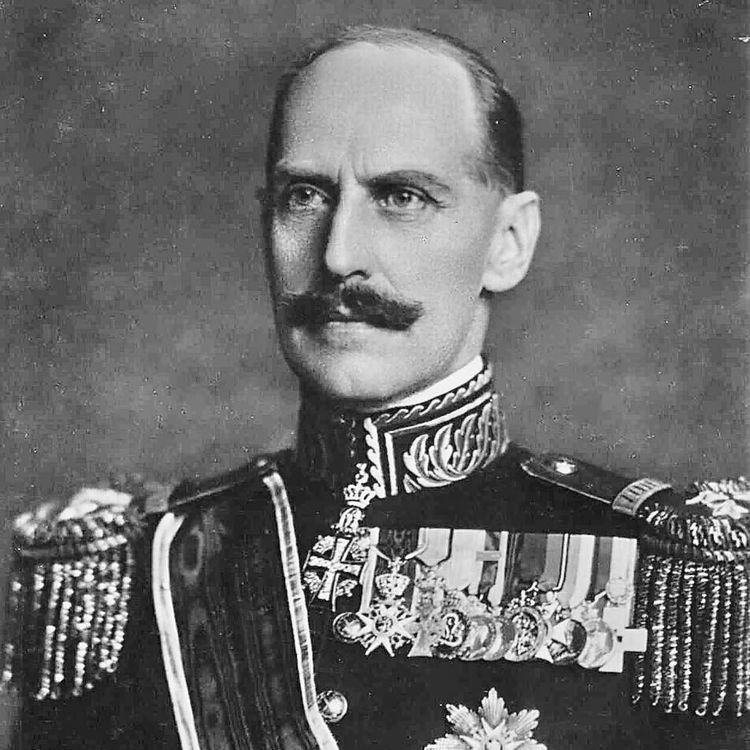
North by Norway
The Hunt for the King (part 1)
Today’s podcast is about the greatest drama of modern Norwegian history. What Norwegians call ‘Aprildagene’ – the fateful days of the 9th, 10th and 11th of April 1940. The greatest drama? How else to describe three days that start with King Haakon in his bed in the palace in central Oslo, and finish with the king and government hunted by the Nazis from town to village to farm. Three days that finish with them stumbling through snow as German planes strife and bomb the ground around them in an assassination attempt. How else describe three days that see a coup d’etat by a politician whose party – at the most recent general election – gained a meagre 1,8 percent of the popular vote. Today, Act 1 of the drama: the 9th of April. The climax of the 10th and 11th comes in the next podcast.
EPISODE PHOTO
King Haakon VII of Norway in 1930
Photographer: Ernest Rude
Public Domain
CONTACT
Twitter: (a)northbynorway
Email: northbynorway(a)gmail(.)com
MORE INFO
andrewjboyle(.)com
More episodes
View all episodes
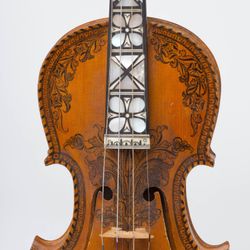
Deep Culture
21:09|Come with me on a pilgrimage to the tiny mountain village of Vågå – together with 800 other people. They have been drawn there by one passion, one hunger. To hear the music of the Hardanger fiddle. Delicate and decorative – muscular and feisty. With this podcast, I am doing penance for past sins, having previously believed the Hardanger fiddle to be near-obsolete, a museum piece. And its music unsophisticated. How wrong I was! Hearing the instrument at its mysterious and magnificent best – as played by virtuoso Ottar Kåsa – opened a gateway for me to deep Norwegian culture. It achieves a modern miracle: to be vigorously and unsentimentally alive, while maintaining a musical inheritance. And it also connected up with the deep culture of my own background, on the west coast of Ireland. EPISODE PHOTODetail of Hardanger fiddle made in 1911–12 by Olav Eivindsen Bakkene, Telemark i 1911-12. The instrument belongs to Telemark Museum. From: digitalmuseum.noPhoto: Bård LøkenLicence: CC BY-NC-ND 4.0CONTACTTwitter: (a)northbynorwayEmail: northbynorway(a)gmail(.)comMORE INFOandrewjboyle(.)comTHANKSto Ottar Kåsa for permission to use his recording of Høgsetbenken (springar after Myllarguten)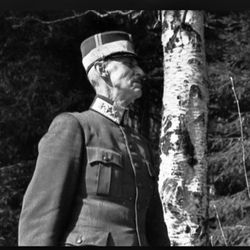
The Hunt for the King (part 2)
20:52|Hitler demanded that Vidkun Quisling should be Prime Minister. The king said: No! With that, all possibility of compromise was closed off for King Haakon and his government. It was a decision that put them in extreme danger. No monarch or head of state was killed by the Nazis during the war – but on April 11th 1940, they not only tried to assassinate King Haakon, they were also convinced they had succeeded. In fact, the king and politicians evaded the bombing raids on Elverum and Nybergsund. They moved northwards from place to place – to avoid detection and to bolster the spirits of the ever-more beleaguered defence forces. But they finally had to sail for England and exile. As the figurehead of Norwegian resistance, the king’s work from England was of huge significance for Norway’s people.EPISODE PHOTOKing Haakon seeks cover in a birch grove during an air raid on Molde in late April 1940. Photo: Per BratlandLicence: CC BY-NC-SA 3.0 NOCONTACTTwitter: (a)northbynorwayEmail: northbynorway(a)gmail(.)comMORE INFOandrewjboyle(.)com
MUNCH – in his own words
23:15|‘I walked one evening along a road – on one side lay the town, and the fjord lay below me…’ In this way begins Edvard Munch’s account of how he came to paint The Scream. Besides the Mona Lisa, it is probably the most recognisable image ever created. Munch painted in order to ‘explain my life to myself’. And for the same reason, he wrote constantly in notebooks about his anxieties, his unhappy love life, his disappointments and his creative ideas. His writings are often witty and – from the man who gave modern anxiety its visual language – full of searing insights into the challenges of life and society. For today’s podcast, I have rummaged around in these sources to let Norway’s great artist speak for himself. ‘I know I have to return to the road by the edge of the cliff – that is my road.’EPISODE PHOTOEdvard Munch: Self-Portrait (1905) Public Domain Owner: Nasjonalmuseet for kunst, arkitektur og designCONTACTTwitter: (a)northbynorwayEmail: northbynorway(a)gmail(.)comMORE INFOandrewjboyle(.)com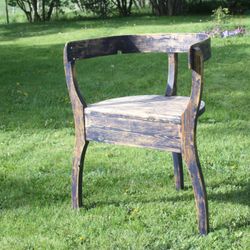
A Simple Blue Chair
21:26|On the 28th of July this year, it will be exactly 100 years since an extraordinary event took place in the tiny mountain village of Lesjaskog. In the cultural history of modern Norway – well, there’s nothing quite like it. On a simple, blue kitchen chair, one of Europe’s greatest artists was carried to the top of a nearby mountain. A round trip of nearly 8 hours. After 20 summers in Norway, it would be his last view of the mountains for the ailing composer. It was a huge feat of endurance – and of love – by those closest to him to get him to the top and down again. Today, I tell the story of how that Englishman came to love the Norwegian mountain landscape, and how he let if fill his music. For his friends, it was important to let him see the mountains one last time, before his eyesight failed. EPISODE PHOTOThis simple blue chair made possible an extraordinary event. CONTACTTwitter: (a)northbynorwayEmail: northbynorway(a)gmail(.)comwebpage: andrewjboyle(.)comTHANKSto Sonja Nyegaard for her vocal contribution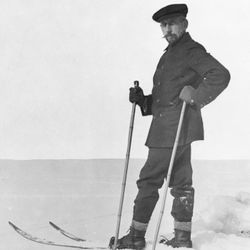
A Scot Learns to Ski (Part 2)
21:22|Learning to go downhill – wow, that was an uphill struggle! Getting into skiing as an adult is all about making a right arse of yourself. But during my first long winter in Norway, I managed to reconnect with a sense of innocent wonder at the world I hadn’t known for years. I would go busking in downtown Oslo in the morning, then back up to the light and the forest. But there were also those three Dark Arts of the Forest that defeated me – a trainee in the tracks! And just think – how you pronounced a single word could be hazardous to your health! Finally, there are a few sobering thoughts about the seemingly fatal damage to skiing as a pastime and sport caused by the effects of climate change. This is the second part about my first winter in Norway. Part One was last week. EPISODE PHOTOFelt I looked quite smart, even with clothes and skis bought at a flea market! Ok, just kidding, this is Roald Amundsen in 1909.Photo: Anders Beer WilsePublic DomainCONTACTTwitter: (a)northbynorwayEmail: northbynorway(a)gmail(.)comMORE INFOwebpage: andrewjboyle(.)com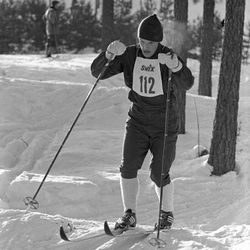
A Scot Learns to Ski
19:36|At last! For a couple of weeks, Southern Norway has been buried in enough snow to gladden the heart of every Norwegian (and Scot) who loves to ski off into the forest – enough snow to dull the pain of past winters with very little of the fluffy stuff. The exotic character of winter in Norway is one of the main reasons I never left the country. But the recent snowfall has brought to mind groan-out-loud memories of how I, as a full-grown Scottish man who had thrived in the inner city grime of Scotland and England, first caught the bug. The itchy fever that compels you to strap planks onto your feet, turn towards the snow-heavy trees, and abandon all things that bind you to the civilised, urban world. My musings on winter wonders are in two parts, this is Part One, and the second comes next week. EPISODE PHOTOAn action photo of me pushing on for the gold medal!Ok, only kidding. This is a young enthusiast taking part in the Norwegian Championship in Cross-Country Skiing (Juniors) at Eidsvoll in 1963.Photo: Johan Brun (Dagbladet)digitalmuseum(.)noLicence: CC BY-NC-ND 4.0CONTACTTwitter: (a)northbynorwayEmail: northbynorway(a)gmail(.)comMORE INFO:andrewjboyle(.)com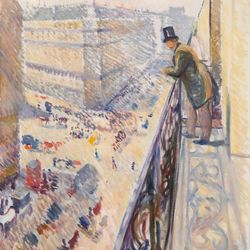
“La Norderie”
23:48|It is well known that the great French artists of La Belle Époque were hugely inspired by the art of Japan and the East. But what is rarely mentioned today is the period of a few years in the 1890s when Scandinavian art, Norwegian in particular, was suddenly and powerfully all the rage in Paris. And not only painting, but also literature, drama and – perhaps most of all – music. For two years in particular, 1895 and 1896, the sunburst of orientalism was clouded over by art from a very different part of the world – by the cool landscapes of the north. Le Figaro raged that: “The Norwegians tyrannise us!” Actress Sarah Bernhardt scornfully called it: la Norderie. But, as one critic writes: “the day of the divine Sarah with her melodramas and poisoned daggers was giving way to Norway-fever.”EPISODE PHOTOEdvard Munch: Rue Lafayette (1891) Public DomainCONTACTTwitter: (a)northbynorwayEmail: northbynorway(a)gmail(.)comwebpage: andrewjboyle(.)com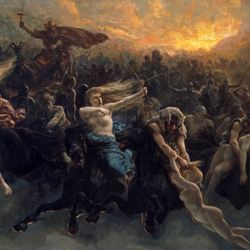
The Wild Midwinter Hunt
24:14|In this episode I take a look at midwinter superstitions that carry us from the ancient sagas to the video game Assassin’s Creed! It is the pit of winter. These are the dark days between Christmas and Epiphany that are only slightly illuminated by the fireworks of New Year. Throughout history, this period has been seen as rather insecure. If one believes in that invisible membrane between this world and the underworld, then at no time of the year is it so thin than at midwinter. The magical, immortal creatures of superstition can almost punch through and touch us, and the layer between living and dead is a mere tissue of existence. Have you observed the customs hallowed by time? If not, then beware! Tonight the hunt may ride again and carry you away. The wild hunt of Odin – the Oskoreia.EPISODE PHOTOÅsgårdsreien (detail), by Peter Nicolai Arbo (1872).Public domain.CONTACTTwitter: (a)northbynorwayEmail: northbynorway(a)gmail(.)comwebpage: andrewjboyle(.)com